#alfie kingsnorth
Text

Gotta love Gordon Morris for giving the people what they want. May I present the forward-facing photo from Berlinale.
If you're not following Gordon on Twitter, get on that. Happy New Year, Terrors!
#the terror#berlinale#gordon morris#david walmsley#christos lawton#guy faulkner#aaron jeffcoate#alfie kingsnorth#anthony flanagan#declan hannigan#freddie greaves#sam rintoul#terror cast
27 notes
·
View notes
Photo
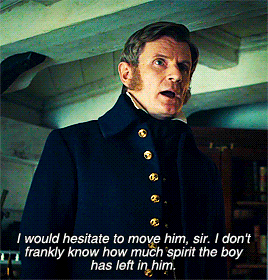
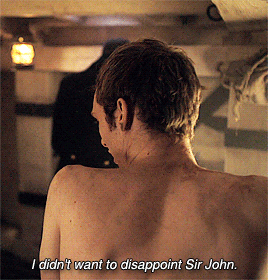




Don't tell Sir John I was afraid...
#the terror#:(((((((#sir john franklin#alexander macdonald#david young#alfie kingsnorth#fronk truly is a barrow boy huh...#mine#edits#thoughts
173 notes
·
View notes
Photo


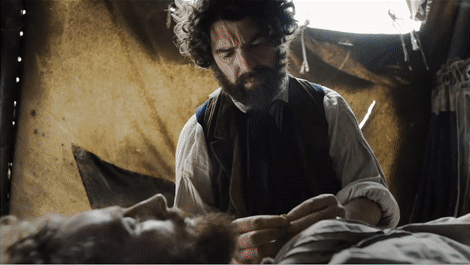

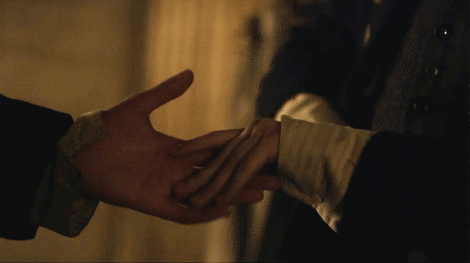

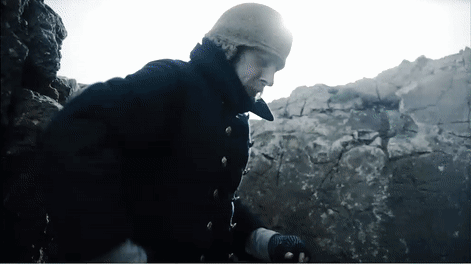

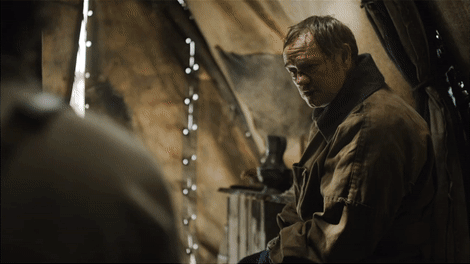
Young asks Goodsir to deliver a ring he owns to his sister once Goodsir returns to England to which he agrees.
[...] He later appears on the deck when Sir John Franklin is giving the departing speech when he suddenly remembers Young's ring and how he forgot to take it off before he was buried.
Unknown to Goodsir, the ring was stolen by Cornelius Hickey off Young's corpse.
[source]
#go for broke#first shot a winner lads#the terror#the terror amc#david young#Alfie Kingsnorth#adam nagaitis#cornelius hickey#william gibson#Edward Ashley#ring#poor david#harry goodsir#paul ready#francis crozier#jared harris#david's ring#my gif
6 notes
·
View notes
Photo

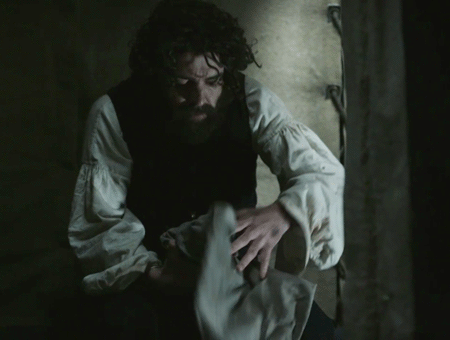


David Young’s ring is a tiny symbol of Goodsir’s future, which only comes to pass after the ring eventually finds its way back to him.
my own theory after re-watching the first episode.
#the terror#the terror spoilers#amc's the terror#harry goodsir#david young#cornelius hickey#paul ready#adam nagaitis#alfie kingsnorth#gifs#foreshadowing
48 notes
·
View notes
Text


When you’re asked to make a plushie of David Young at his burial
#the terror#the terror season 1#the terror amc#david young#alfie kingsnorth#stitching#felt plushie#crafts#felt plush
48 notes
·
View notes
Photo
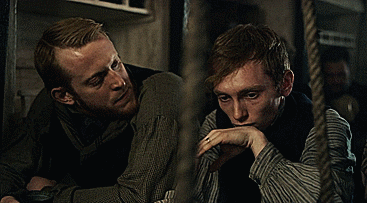
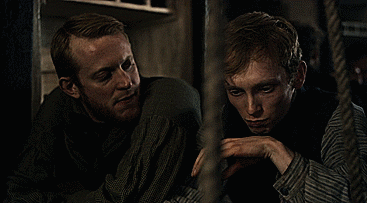





Thanks for the rec! @sadlittleman
37 notes
·
View notes
Photo




Ship’s Boys of the Franklin Expedition - David Young, George Chambers, Thomas Evans and Robert Golding
#The Terror#the terror amc#TheTerrorEdit#David Young#George Chambers#Thomas Evans#robert golding#gif#Alfie Kingsnorth#Sam Rintoul#Joe Hurst#Mikey Collins
189 notes
·
View notes
Photo

[x]
#the terror cast#the terror amc#daniel oldroyd#sam rintoul#aaron jeffcoate#ian hart#alfie kingsnorth#and a puppy
58 notes
·
View notes
Photo
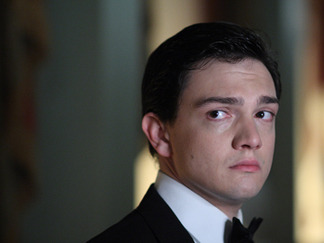






“The Terror Babies”: Sebastian Armesto, Charlie Kelly, Sam Rintoul, Mikey Collins, Aaron Jeffcoate, Alfie Kingsnorth and Daniel Oldroyd.
#sebastian armesto#charlie kelly#sam rintoul#mikey collins#aaron jeffcoate#alfie kingsnorth#daniel oldroyd#terror babies#the terror#theterroredit#the terror edit#the terror amc
43 notes
·
View notes
Photo

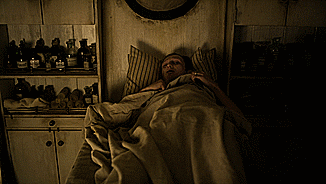
The Terror - Go For Broke
8 notes
·
View notes
Text
John Torrington: Redshirt
(Previous posts 1, 2, 3, 4, 5, 6, 7, 8, 9)
“I'm expendable. I'm the guy in the episode who dies to prove the situation is serious.”
–Guy Fleegman, Galaxy Quest
After the exhumations of Torrington, Hartnell, and Braine, and the subsequent publication of Frozen in Time, there was a fresh wave of literature inspired by the photographs and findings from Beechey Island. Novels, short stories, and poems either attempted to recreate what had happened to the expedition according to the latest findings or incorporated this new information in some other way. Some feature Torrington, while some just use certain aspects of the findings, such as the remarkable level of preservation or the lead poisoning theory.
I have read only a handful of the many literary works about the Franklin Expedition that have been published since the exhumations on Beechey Island, so I can’t speak for every novel, poem, or other form of literary composition that has come out since then. For the purposes of this post I decided to focus only on works that feature Torrington himself, and even then, I haven’t had a chance to read every work that does. There may be some that have a completely different take on the story and depict Torrington in a way not seen in the works that I will be discussing, but those will have to wait for another day. For this post I can only focus on the fraction of Franklin-related literature that I have been able to read so far, and if I leave out something that people think is a must-read, I apologize. But feel free to let me know what it is, because I love reading new interpretations of the expedition’s story.
(Unless you’re here to tell me about the Marvel comics character Pestilence, a supervillain who is actually Francis Crozier, preserved in ice for over a hundred years. He’s still alive but he’s gone mad and has magic for some reason. And he can possess other people. Pestilence was first introduced in 1986, and yes, him being frozen in ice was obviously inspired by the exhumation of Torrington. Now, let’s never speak of this again.)
I’m going to start with the various novels that have attempted to tell the story of the Franklin Expedition. FYI, there will be some spoilers, but mostly the spoilers will be about Torrington and other crewmembers dying, which shouldn’t really be a spoiler at this point.
Before I get into the specific books, though, I’ve noticed that there are certain themes in many of these stories, particularly involving Torrington. As his illness and death is a known point during the timeline of the expedition, he inevitably gets a mention in many of these works, but since he died so early in the expedition, he rarely has a major role in the overall story. Not only that, Torrington’s characterization is typically absent altogether. He’s generally depicted as a variant of the Victorian waif—pale and thin and doomed to die—and rarely does he get any dialogue or development. He’s first blood, a harbinger of things to come, but almost never a character on his own. He’s simply there to die, like a redshirt in Star Trek.
I have often flipped through books to see where Torrington comes in, wondering if he’ll be given something to do before he passes, and more often than not I have been disappointed. His death is always included because we know he died, and if it were left out it could be seen as callous at worst or inaccurate at best, yet his inclusion sometimes feels more like the author simply checking something off a checklist. Enters Lancaster Sound, check; winters at Beechey Island, check; Torrington dies, check. Sometimes there might be a funeral, where the main characters speak of Torrington as if he’s been there the entire time and wasn’t just first mentioned only two paragraphs ago, perhaps with Franklin orating the first of many eulogies (“We have lost one of our own today, a fine sailor named John [looks at smudged writing on his hand] Turlington…”).
But one thing that Torrington usually gets is a brief mention of his burial clothes. Since we know what he looks like in death, there’s often a description of him in his coffin, perhaps a mention of his youth, small stature, and wasted appearance. His illness usually gets a mention too—and sometimes he gets berated postmortem for going to sea while sick.
Of course, since Torrington dies only seven months into the expedition, it’s not surprising that he doesn’t have much to do in most stories, but I do wish he could at least have a little more of a role before taking his final bow. It would make his death more meaningful if he was a known character and not just a name in a long list of people who are about to die.
For a deeper dive into how Torrington is typically depicted in novels about the Franklin Expedition, I’m going to start with the most mainstream of the books I’ve read—and also the most inaccurate. That would be The Terror by Dan Simmons, a story that posits what if, rather than starvation, scurvy, illness, and lead poisoning killing off the crew, there was also an evil magical bear bent on their destruction. The book was recently adapted into a television series on AMC, and I watched the show first. I loved the show—it was very well done, despite the evil bear—so I read the book. The book…well, it had some good parts to it, but also some incredibly ridiculous parts and some incredibly offensives ones too. I won’t get into a full review of the book, though—I’m just here for Torrington.
Torrington doesn’t get mentioned until his death in The Terror. In fact, the sentence introducing him is “John Torrington, stoker on HMS Terror, died early this morning.” His slow decline from consumption is described, while also saying that he had obviously been in the advanced stages of the disease when he signed up for the expedition. There’s an aside about how ironic it is that Torrington’s doctor had told him going to sea would be good for his health, something that isn’t based on a known fact about Torrington, but getting away from Manchester and into fresh air may have been part of Torrington’s intent when signing up. Judging by the state of his lungs, he probably had difficulty breathing in the thick smoke of industrial Manchester, so it’s not so far-fetched to think he may have wanted a change of scenery to improve his health.
The dressing of his body for burial, descriptions of the clothes and bindings we know so well from the exhumation pictures, and a brief recap of his funeral get described in just a few pages. The image of him in his striped shirt sticks out in the memory of Dr. Goodsir (who is writing this down in his diary), an image that anyone who is familiar with the Franklin Expedition would know very well. But that’s about it for Torrington in this book. His name does pop up a few more times, though, because Captain Crozier has a habit of going over the names of the dead to himself, assessing how many men he has lost at different points throughout the book. Torrington as part of a list of the dead is mostly how we see him in The Terror.
In the TV adaptation, Torrington doesn’t appear at all, because the show picks up after the ships have left Beechey. The men who died at Beechey are mentioned a few times, usually as a group—referred to as “the men on Beechey” or some variation of that—with only John Hartnell being mentioned by name. Torrington, however, does get a visual sort of reference when one of the ship’s boys, David Young, dies in the first episode. During his burial, his coffin accidentally comes open, and his burial clothes look very reminiscent of the famous photos of Torrington.

Alfie Kingsnorth, the actor who plays David Young, looks a lot like Torrington, making this image extra eerie. In fact, I started watching the show because I saw a screencap of the burial and thought it was Torrington. When I realized that Torrington wasn’t in the show, I was disappointed, but I ended up loving the show anyway.
The next book I want to discuss is a novel that tried to do what The Terror did but without the monster. Robert Edric’s book The Broken Lands tells the story of the Franklin Expedition from the point of view of Commander James Fitzjames of the Erebus, third-in-command of the expedition. Fitzjames seems to be a popular point-of-view character since another book I’ll be discussing in this post is also from his perspective. Fitzjames is an interesting historical person, particularly if you’ve read Battersby’s biography of him, although that was published long after The Broken Lands came out. Being from Fitzjames’s point of view, however, means that the story focuses mostly on what happens on Erebus, which means Torrington, leading stoker on Terror, wouldn’t have had much of a role no matter what.
At least in this book Torrington does get mentioned before his death, but only just. When the ships are wintering on Beechey, it’s mentioned that two men become ill, Torrington and John Hartnell. Since Hartnell died only a few days after Torrington, they would have been ill around the same time. However, rather than showing signs of tuberculosis followed by pneumonia as the killing blow, Torrington and Hartnell suffer symptoms that get mistaken for scurvy but then are assumed to be some form of food poisoning. Torrington dies while Terror’s doctor, John Peddie, sits with him, but there’s not much to the scene. He and Hartnell get buried on the same day after a snowstorm delays their burials. Hartnell gets more attention here because of his autopsy, and there’s no mention of striped shirts and bound limbs.
But that’s not the last we hear of them. In the next chapter, it’s discovered that some crewmembers had been pilfering from the canned food supply. William Braine gets flogged for his part in the scheme, and he starts showing symptoms similar to Torrington and Hartnell. Braine then confesses that Torrington and Hartnell had also been involved in stealing canned foods, and the doctors jump to the conclusion that the canning procedure must be responsible for the illness and deaths of these three men. So instead of going with the known causes of death of tuberculosis and pneumonia, in this version of the story the Beechey Boys die of lead poisoning and only lead poisoning. That bothers me not only because it completely ignores the actual cause of death, but because it makes Torrington, Hartnell, and Braine criminals, stealing food from the ship’s stores. I guess this was Edric’s attempt at explaining why these three men had such high levels of lead so early on in the expedition, but this explanation doesn’t work for me because it ignores a lot of other things in a struggle to make certain puzzle pieces fit. I admit, I got a little overprotective when I saw Torrington being accused of something like this and started ranting about it to my sister—despite the fact that I have no idea what sort of person he was actually like, and he’s been dead for over hundred seventy years, so he doesn’t really need me to protect him from purely fictional accusations. But still…
The other novel from Fitzjames’s perspective is North with Franklin by John Wilson. This is set up as a lost journal written by Fitzjames, using some of the known letters and journals written by the real life Fitzjames as a jumping off point. In these fictional journal entries, there’s a mention of a man in sickbay with signs of consumption in August, and there’s an aside wondering why he didn’t inform anyone about his illness prior to setting sail. However, since this is the sickbay on Erebus, this must be a reference to Hartnell, not Torrington. But it’s a hint at what’s to come for both of them. An update on the consumptive man in November confirms that it’s Hartnell, his condition getting worse, and then it’s mentioned that the leading stoker on Terror is suffering the same. Again, Fitzjames wonders why Hartnell and Torrington didn’t mention their condition before setting sail, calling their weakened lungs a “death warrant” in the Arctic. There’s another update in late December about their worsening condition, until they both succumb. Out of the three books discussed so far, this is the most that Torrington has been mentioned pre-death, but he says not a single word.
Torrington’s death, taking place on New Year’s Day, brings down the happy celebrations of the crew. Again, it’s mentioned that Torrington should never have undertaken the journey with his illness, as if it hasn’t been driven home enough that he and Hartnell had probably been showing symptoms when they first boarded and should have reported it. Torrington’s burial clothes get an overview, with his short, emaciated appearance being compared to that of a child. He gets a funeral, with Franklin presiding.
The repeated mentions of how Torrington and Hartnell should have declared their illnesses before sailing on the expedition almost comes off as blaming them for their early demise. Realistically, of course, they probably had noticed some early symptoms before leaving England. But how bad were those symptoms? Were they enough to make them think they had a disease that would prove fatal? Did they realize that they wouldn’t be coming back, or did they shrug it off as just another cough? Torrington had bad lungs anyway, so maybe he didn’t notice when his black-lung-coughing changed into tuberculosis-coughing.
John Wilson wrote another book about the Franklin Expedition, this one for young adults, called Graves of Ice. This book is from the point of view of one of the ship’s boys, George Chambers. Chambers was assigned to the Erebus, so the main action happens on that ship once again, which means Torrington barely appears. Again. William Braine, however, befriends Chambers and gets far more dialogue and development than Torrington or Hartnell in any of the previous books—or this one—combined. Braine actually gets to defend his actions by saying his lungs had always been weak, and he thought the cold might do them good, explaining why he didn’t bother declaring any illness before setting sail. In real life, Torrington probably felt the same way, but he doesn’t get to stand up for himself here. In a prime example of dramatic irony, Braine calls Torrington an idiot for signing up while sick.
Torrington and his illness get mentioned the same day he dies, just shortly before Dr. Peddie informs Franklin of Torrington’s passing. His death gets called a bad omen among the crew. His burial gets a brief mention, but there’s no lingering on the image of his body in its coffin, or any mention of it even. He has no lines once again, nor does George Chambers ever meet him. At least one crewman admits that there are many men on board with lungs as bad as Torrington, as if to soften the accusation that Torrington should have known better, but it doesn’t soften it by much.
In all four of these books Torrington has had zero lines of dialogue. He gets sick, he dies. That’s it. There’s another book, a self-published one that came out this year, that I had hoped may do better by him. That would be Toward No Earthly Pole by Jonathan Schaeffer, which is from the point of view of James Thompson, the engineer on Terror. Being the engineer, Thompson would have interacted with Torrington a great deal, so I’d hoped I would get to see Torrington fleshed out more as a real character, but sadly that was not to be. Torrington does get mentioned more before his death than in other books, but it’s mostly in superficial interactions where anyone could have stood in instead, such as Torrington pointing out a polar bear.
Near the beginning of the story, Thompson gives a rundown of each stoker, giving Torrington a less-than-stellar description as a weakling, saying that, “He comes across as an old man resigned to his lot in life.” But Thompson does remark that Torrington is handsome, which isn’t really that important, but it is mentioned multiple times in the text. I guess the point was to emphasize that Torrington was cut down in the prime of his young, handsome life, but it comes off as a little awkward.
Torrington apparently has no friends in this interpretation of the story, and only Thompson seems to visit him when he gets sick. The day before he dies, Torrington, in a delirium, says some incomprehensible sentences, ending on an ominous “…do not belong here,” a phrase that Thompson initially interprets as meaning that Torrington realized he didn’t belong there, but that over the course of the expedition Thompson comes to think means the entire expedition didn’t belong there. Torrington gets the usual drawn-out illness coverage, unsurprising death, and a mention of his burial. He also becomes an omen that gets mentioned again as the situation grows worse. Even though Thompson would have been one of the crewmembers to interact with Torrington the most, Torrington still doesn’t get much development as a character.
However, there is one retelling of the Franklin Expedition that gives Torrington quite a bit of development. That would be Kristina Gehrmann’s graphic novel Im Eisland (or Icebound in the English version). I previously discussed Im Eisland in my last post about Torrington in art, but now I’d like to focus on the writing rather than the artwork. Torrington is actually introduced as if he’s going to be a major protagonist of the story, and for a time he does play a large role. We get a glimpse of a sweet little romance between him and his fiancée (we don’t know if Torrington was engaged to anyone, but there’s no evidence that he wasn’t either), and he develops a warm friendship with Thomas Evans, one of the ship’s boys, whom he teaches to read. Torrington comes alive as a real person here, and while yes, he does inevitably become too ill to work and dies, as he did in real life, he’s much more than just the first victim of a tragedy. If you’re looking for some good Torrington fiction, Im Eisland is an excellent choice.
But not all Torrington-related literature is a retelling of the expedition. There is a famous story by Margaret Atwood, “The Age of Lead,” which appears in her short story collection Wilderness Tips. I should say upfront that this story is not about Torrington himself. Atwood described her use of him as that of an extended metaphor, as his death is juxtaposed with that of another character’s in the story. But the story still delves into the pathos around Torrington’s death. In mourning for her friend, Jane, the protagonist, mourns for Torrington in a way too. As Jane remembers sitting with her dying friend, she ponders about who may have sat with Torrington in his final days. His half-open eyes are described as “the light brown of milky tea,” and they look back at Jane as she watches a program about him on television. It’s a touching story that asks some emotional questions about Torrington’s death—did he have anyone to comfort him as he passed, so far from home? Did anyone on the ship mourn him, love him? The story might not be about Torrington in the end, but he makes for a powerful centerpiece, and this story treats his humanity as far more present than many of the novels discussed above.
The last piece of literature I’d like to discuss is “Envying Owen Beattie” by Sheenagh Pugh. In a poem that gives Seamus Heaney a run for his money, Pugh lovingly describes the exhumation of Torrington’s mummified body. She compares Torrington to Snow White by describing his being cocooned in ice as “asleep in his glass case.” The reason she envies Owen Beattie is because of an anecdote Beattie had once told that Pugh recounts here, of how when Beattie lifted Torrington out of his coffin, Torrington’s head lolled onto Beattie’s shoulder, and they stared eye-to-eye at each other, Beattie holding his frail, limp body. This leads Pugh to conclude her fairy tale metaphor by saying “how could you not try to wake him with a kiss?” I have to admit that if I had been in Beattie’s place, I probably would have dropped the body, but Pugh romanticizes the moment instead.
While many of the novels that I’ve described above treat Torrington as just another milestone to get through in the story, Pugh brings far more emotion and love to his depiction in so few words. Torrington looks so very much alive, like a princess under a sleeping spell, so why can’t a kiss break that spell and bring him into the present? A sweet sentiment tinged with the sadness that we know he can’t be awakened by a kiss, because it’s no spell that’s put him asleep. He’s too far beyond fairy tale dreams to come back. The tragedy of Torrington’s death gets swallowed by the larger tragedy of the Franklin Expedition’s demise in the full-length novels, but in shorter pieces such as Pugh’s poem and Atwood’s short story, Torrington’s death is given greater thought and respect. Torrington, after all, was no redshirt on Star Trek but a human being. He wasn’t just a name, a check on a checklist, but a man who suffered and died at too young an age. But the tragedy of the individual is easily lost among the tragedy of the group.
Next: My final post, a personal reflection as I ponder just what fascinates us about him after all these years.
<<Back | Next >>
Torrington Series Masterlist
7 notes
·
View notes
Text
"Because it is needed, and because it is deserved..." the handsome Terror cast at Berlinale 2018. I just feel like this should be everywhere. Wishing everyone a safe and happy New Year! 🎉🎉

Source: declanhannigan.com
#the terror amc#terror cast#david walmsley#sam rintoul#aaron jeffcoate#alfie kingsnorth#freddie greaves#declan hannigan#david walmsley looking particularly dashing#berlinale
13 notes
·
View notes
Video
youtube
Hollyoaks: Peri's All Alone
Warning: Homelessness
#Hollyoaks#Dean#Alfie Kingsnorth#Harley Frater#Mollie Lambert#Peri Lomax#Ruby O'Donnell#Leela Lomax#Kirsty Leigh Porter#Louis Loveday#Karl Collins#Peri Homeless#Homeless#Homelessness
0 notes
Link
0 notes
Text
Finalmente y tras una larga espera, llega a AMC la serie que estábamos esperando: The Terror.
Si bien esta serie está basada en hechos reales acontecidos en el siglo XIX, para aquellos amantes del horror de corte distópico presentará algunas referencias que nos harán recordar a varios de nuestros autores preferidos y, por supuesto, con la premisa que presenta el título, seguramente encontraremos algo más que emocionante durante el desarrollo de la trama.
Sin exagerar, esta serie, desde su anuncio y presentación de materiales de avance ha sido objeto de interés por parte de espectadores de todo el mundo, así como objeto de discusión en distintos foros dedicados al tema de horror y la literatura de corte distópico por lo que, sin duda, presentará uno de esos acontecimientos que marcan la presentación de un nuevo serial de culto a nivel mundial.
The Terror estrena mundialmente este lunes 26 de marzo a las 9:00 PM con sus dos primeros episodios, presentando uno nuevo todos los Lunes a través de AMC.
¿Quieres saber más?, ¡Dale Play y sigue leyendo!
The Terror es protagonizada por Jared Harris, Ciarán Hinds y Tobias Menzies, y producida por Ridley Scott
La primera serie de antología de AMC, “The Terror”, llega mundialmente a la pantalla todos lunes a partir del 26 de marzo a las 9:00 PM, para llevar a los espectadores en un viaje de suspenso y terror gracias a la visión de Ridley Scott. El día del esteno se emitirán los dos primeros episodios uno atrás del otro.
Inspirada en una historia real ocurrida en el siglo XIX, “The Terror” se basa en la temeraria travesía emprendida por dos buques de la Marina Real británica a través de aguas entonces inexploradas, con el propósito de descubrir el mítico Paso del Noroeste, una nueva ruta que uniría a Europa con el Océano Pacífico a través del Ártico. Enfrentados a condiciones climáticas extremadamente traicioneras, escasez de recursos, decrecientes posibilidades de sobrevivir y el miedo a lo desconocido, la tripulación que emprende el viaje es puesta a prueba hasta el límite mismo de sus fuerzas.
Aislados, casi congelados e incapaces de abrirse paso en uno de los confines más inhóspitos del planeta, estos hombres deberán vencer dificultades colosales y sobreponerse a la desesperación más profunda si desean salir con vida de una lucha que los enfrentará no solo a los rigores del entorno, sino a su propia naturaleza humana.
“‘The Terror’ combina una historia fascinante, complejos e imperfectos personajes, el eterno espíritu humano y el horror y promesa de un mundo desconocido”, explicaron los productores ejecutivos y showrunners, David Kajganich y Soo Hugh. “Esperamos transporatar a los espectadores hasta ese mundo”.
“The Terror” consta de 10 episodios de una hora cada uno, y es protagonizada por Jared Harris, quien interpreta a Francis Crozier, capitán del HMS Terror y segundo hombre al mando de la expedición. El elenco está formado por Tobias Menzies, Ciaran Hinds, Paul Ready y Adam Nagaitis. Filmada en Budapest, Hungria, “The Terror” es producida por Scott Free, Emjag Productions and Entertainment 360 en asociación con AMC Studios. Además de Kajganich y Hugh, los productores ejecutivos son Ridley Scott, David W. Zucker, Alexandra Milchan, Scott Lambert y Guymon Casady.
SERIE
THE TERROR
Estreno: lunes 26 de marzo, 9:00 pm ( doble episodio ) por AMC
Paul Ready as Dr. Henry Goodsir, Alfie Kingsnorth as David Young – The Terror _ Season 1, Episode 1 – Photo Credit: Aidan Monaghan/AMC
Tobias Menzies as James Fitzjames – The Terror _ Season 1, Gallery – Photo Credit: Nadav Kander/AMC
Nive Nielsen as Lady Silence – The Terror _ Season 1, Episode 3 – Photo Credit: Aidan Monaghan/AMC
Greta Scacchi as Lady Jane Franklin – The Terror _ Season 1, Gallery – Photo Credit: Nadav Kander/AMC
Trystan Gravelle as Henry Collins – The Terror _ Season 1, Gallery – Photo Credit: Nadav Kander/AMC
– The Terror _ Season 1, Episode 2 – Photo Credit: Screengrab/AMC
– The Terror _ Season 1, Episode 3 – Photo Credit: AMC
Jared Harris as Francis Crozier – The Terror _ Season 1, Episode 3 – Photo Credit: Screengrab/AMC
Jared Harris as Francis Crozier – The Terror _ Season 1, Episode 2 – Photo Credit: Aidan Monaghan/AMC
Ciarán Hinds as John Franklin – The Terror _ Season 1, Gallery – Photo Credit: Nadav Kander/AMC
Ciarán Hinds as John Franklin, Tobias Menzies as James Fitzjames – The Terror _ Season 1, Episode 1 – Photo Credit: Screengrab/AMC
Tobias Menzies as James Fitzjames – The Terror _ Season 1, Episode 3 – Photo Credit: Screengrab/AMC
Paul Ready as Dr. Henry Goodsir – The Terror _ Season 1, Gallery – Photo Credit: Nadav Kander/AMC
El canal AMC puede verse en México por: AxtelTV (973), TotalPlay (444 y HD 490), Sky (419 y HD 1425), Megacable (207 y HD 1207), Izzi (611 y HD 963), Cablemás (611 y HD 963), Cablevisión Monterrey (611).
Sobre el Canal AMC
Las narrativas originales y excepcionales valores de producción han sido por años los pilares del éxito de AMC a nivel mundial. En los últimos tiempos, la señal insignia de AMC Networks se ha forjado una enorme reputación como la creadora de algunas de las producciones más originales, exitosas y comentadas de la televisión contemporánea como Breaking Bad, Mad Men y The Walking Dead, títulos que verdaderamente han redefinido la forma de contar historias en la TV por cable y satelital. Con Fear the Walking Dead, el canal refuerza su imagen de innovación y calidad y cumple su promesa de ofrecer al mercado latinoamericano las grandes producciones que le han ganado fama a nivel internacional.
Para más información visite:
Sitio Web –amctv.la
Twitter – Twitter.com/amctv_la
Facebook – Facebook.com/AMCTVLatam
Instagram – @amctv.la
YouTube – Youtube.com/AMCTVLatam
Blog –amctv.la/blog
The Terror: Estreno mundial con doble episodio el lunes 26 de marzo a las 9:00 pm en AMC Finalmente y tras una larga espera, llega a AMC la serie que estábamos esperando: The Terror.
0 notes
Photo




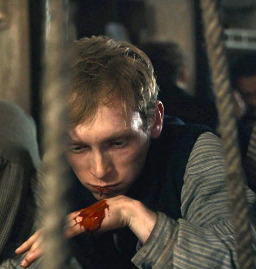
Alfie Kingsnorth as David Young in “The Terror” ( 2018 ).
[ 22 / ? ]
19 notes
·
View notes